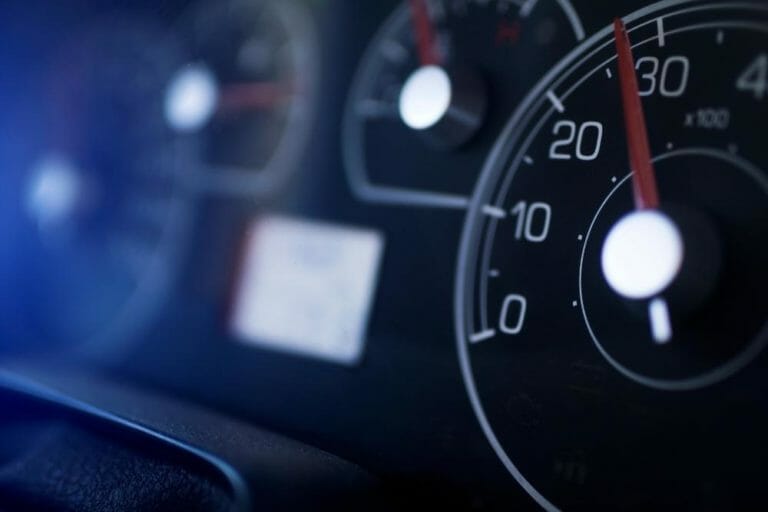What Should My Car Idle At

Maintaining a stable idle speed is crucial for your vehicle's performance and overall health. An idling engine plays a vital role in various systems, from keeping the engine running smoothly to ensuring optimal functioning of accessories like the air conditioner and radio. In this comprehensive guide, we'll explore the ideal idle speed for different vehicles, the factors that influence it, and how to troubleshoot common idle issues.
Understanding the Ideal Idle Speed

The term “idle speed” refers to the rotational speed of the engine when the vehicle is not in motion and the accelerator pedal is not depressed. It is typically measured in revolutions per minute (RPM) and can vary depending on several factors.
The ideal idle speed for most modern vehicles typically falls between 600 and 1,000 RPM. However, this range can vary slightly based on the specific make and model of your vehicle. It's essential to consult your vehicle's owner's manual to determine the recommended idle speed for your car.
Factors Influencing Idle Speed
Several factors can impact the idle speed of your vehicle, including:
- Vehicle Make and Model: Different manufacturers set different idle speed specifications for their vehicles. It's crucial to adhere to the recommended idle speed for your specific make and model to ensure optimal performance and engine longevity.
- Engine Type: The type of engine in your vehicle, such as gasoline or diesel, can influence the ideal idle speed. Gasoline engines typically have a slightly higher idle speed compared to diesel engines.
- Accessories and Electrical Load: When you activate accessories like the air conditioning, power windows, or stereo, they draw power from the engine. This increased electrical load can cause a slight drop in idle speed. Therefore, the idle speed might vary depending on the accessories in use.
- Ambient Temperature: Extreme temperatures can affect idle speed. In colder climates, the engine may idle slightly higher to warm up more quickly. Conversely, in hot weather, the idle speed might be slightly lower to prevent overheating.
- Altitude and Barometric Pressure: High-altitude locations can impact idle speed due to the reduced air density. As a result, engines may idle at a slightly higher RPM to compensate for the thinner air.
Troubleshooting Idle Issues

If you notice that your vehicle’s idle speed is consistently outside the recommended range or exhibits unusual behavior, it could indicate a potential issue. Here are some common idle problems and their potential causes:
High Idle Speed
A consistently high idle speed, exceeding the recommended range, can be caused by several factors, including:
- Vacuum Leaks: Vacuum leaks can allow unmetered air to enter the engine, causing it to run richer than intended. This can lead to a higher idle speed. Inspect the vacuum hoses and connections for any signs of damage or leaks.
- Throttle Position Sensor (TPS) Malfunction: The TPS provides critical information to the engine control module (ECM) about the throttle position. If the TPS malfunctions, it can send incorrect signals, resulting in a higher idle speed.
- Idling Air Control (IAC) Valve Issues: The IAC valve controls the airflow into the engine when the throttle is closed, such as during idle. A faulty IAC valve can cause the engine to idle too high or exhibit erratic behavior.
- Faulty Mass Airflow (MAF) Sensor: The MAF sensor measures the amount of air entering the engine. If it provides inaccurate readings, it can lead to a rich air-fuel mixture and a higher idle speed.
Low Idle Speed
An unusually low idle speed, below the recommended range, may be attributed to the following factors:
- Dirty or Clogged Air Filter: A clogged air filter restricts the airflow into the engine, leading to a lean air-fuel mixture and potentially causing the engine to stall or idle erratically.
- Fuel Injector Problems: Faulty fuel injectors can deliver an inadequate amount of fuel to the engine, resulting in a lean mixture and low idle speed.
- Engine Vacuum Leaks: Similar to high idle speed, vacuum leaks can cause the engine to run lean, leading to a low idle speed and potential stalling.
- Malfunctioning Idle Air Control (IAC) Valve: A faulty IAC valve can restrict the airflow into the engine during idle, causing the engine to stall or idle at a lower speed.
Erratic Idle Behavior
If your vehicle’s idle speed fluctuates significantly or exhibits unusual behavior, it could be due to:
- Worn or Damaged Spark Plugs: Faulty spark plugs can cause misfires, leading to unstable idle behavior.
- Dirty or Malfunctioning Throttle Body: A dirty or malfunctioning throttle body can disrupt the airflow into the engine, causing erratic idle behavior.
- Ignition System Issues: Problems with the ignition system, such as a faulty ignition coil or distributor, can result in misfires and unstable idle.
Maintaining Optimal Idle Speed
To ensure your vehicle maintains an optimal idle speed, consider the following best practices:
- Regular Maintenance: Stick to your vehicle's recommended maintenance schedule, including regular oil changes, air filter replacements, and spark plug inspections.
- Monitor Engine Warning Lights: Pay attention to any illuminated warning lights on your dashboard. These lights can indicate potential issues with the engine or its components.
- Avoid Prolonged Idling: Prolonged idling can waste fuel and increase emissions. If you anticipate being stationary for an extended period, consider turning off the engine.
- Use High-Quality Fuel and Oil: Opt for high-quality fuel and motor oil to ensure optimal engine performance and reduce the risk of idle-related issues.
Conclusion
Understanding and maintaining the ideal idle speed for your vehicle is essential for its overall performance and longevity. By being aware of the factors that influence idle speed and promptly addressing any issues, you can ensure a smooth and efficient driving experience. Remember to consult your vehicle’s owner’s manual and seek professional assistance when needed.
How do I check my vehicle’s idle speed?
+
To check your vehicle’s idle speed, locate the tachometer on your instrument cluster. The tachometer displays the engine’s RPM in real time. While the vehicle is stationary with the engine running, observe the tachometer needle. If it falls within the recommended idle speed range (typically between 600 and 1,000 RPM), your idle speed is optimal.
Can I adjust my vehicle’s idle speed manually?
+
No, it’s not recommended to adjust your vehicle’s idle speed manually. Idle speed is controlled by the engine control module (ECM), which automatically adjusts it based on various factors. Attempting to manually adjust the idle speed can lead to engine damage and increased emissions.
Why does my car idle roughly when it’s cold outside?
+
Cold temperatures can cause the engine to idle roughly due to a lean air-fuel mixture. The engine control system adjusts the air-fuel ratio to compensate for the cold weather, resulting in a higher idle speed and potential rough idling until the engine warms up.
What should I do if my car stalls while idling?
+
If your car stalls while idling, it could indicate a variety of issues, such as a faulty idle air control (IAC) valve, a dirty air filter, or a malfunctioning fuel injector. It’s recommended to consult a qualified mechanic to diagnose and address the underlying cause.
Can an unstable idle speed affect fuel efficiency?
+
Yes, an unstable idle speed can impact fuel efficiency. If the engine idles erratically or at a higher RPM than recommended, it can lead to increased fuel consumption. Maintaining a stable idle speed is crucial for optimizing fuel efficiency.


